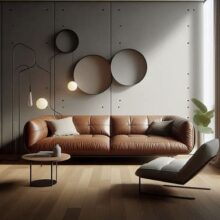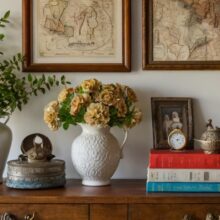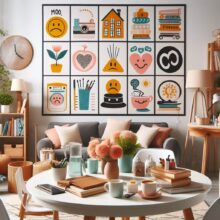How to Mix and Match Patterns for Your Home Like a Pro

How to Mix and Match Patterns for Your Home Like a Pro
Introduction: Did you know that mixing patterns can transform your home from ordinary to extraordinary? Whether you’re a minimalist or a maximalist, combining different patterns can add depth, personality, and visual interest to your space. In this article, we’ll explore the principles of mixing patterns, practical tips for combining them, and how to create a cohesive yet dynamic space. By the end, you’ll be ready to transform your home with confidence.
Understanding the Basics of Mixing Patterns
Patterns come in various forms—geometric, floral, abstract, and more—each with its own visual impact. The key to mixing patterns lies in understanding scale, color, and balance. For example, pairing a large-scale floral print with a small-scale geometric pattern can create a harmonious contrast.
Scale and Proportion
When mixing patterns, consider the scale of each design. A large, bold pattern can serve as a focal point, while smaller patterns can complement it without overwhelming the space. For instance, a striped sofa paired with a polka dot throw pillow creates a balanced look.
Color Coordination
Using a common color scheme is essential for unifying different patterns. For example, a navy blue and white color palette can tie together a floral rug, striped curtains, and a geometric accent chair.
Principles of Combining Patterns
One of the most popular design principles is the 60-30-10 rule, which suggests using 60% of a dominant pattern, 30% of a secondary pattern, and 10% of an accent pattern. This creates a balanced and harmonious look. Additionally, consider the role of textures and focal points in unifying patterns. For instance, a textured throw blanket can add depth to a room with multiple patterns.
Successful Pattern Combinations
A modern living room might feature a geometric area rug, abstract throw pillows, and a floral accent chair. The key is to balance bold patterns with more subdued ones to avoid overwhelming the space.
Practical Tips for Mixing Patterns
For Beginners: Start with a neutral base and introduce patterns gradually. Use a common color scheme to ensure cohesion. For example, a beige sofa with patterned throw pillows and a matching rug can create a balanced look.
For Advanced Decorators: Experiment with bold contrasts and layering patterns. Try pairing a large floral wallpaper with a geometric accent chair for a dynamic effect.
Creating a Mood Board
A mood board can help you visualize how different patterns will work together. Gather fabric swatches, paint samples, and images of furniture to create a cohesive plan before making any purchases.
Common Mistakes and How to Avoid Them
One common mistake is overloading on patterns, which can make a space feel chaotic. To avoid this, limit the number of patterns in a room and use solid colors as a buffer. Another mistake is ignoring scale, which can lead to visual imbalance. Always consider the size of patterns relative to the space and other elements.
Mismatching Colors
Combining patterns with clashing colors can create a disjointed look. Stick to a consistent color palette to ensure harmony.
Trends and Innovations in Pattern Mixing
Maximalism is making a comeback, with bold patterns and vibrant colors taking center stage. Global-inspired patterns, such as Moroccan tiles or Indian paisleys, are also trending, adding a touch of cultural richness to home decor. Monochromatic schemes, where different patterns share the same color family, offer a sophisticated way to mix patterns without overwhelming the space.
Sustainable and Ethical Choices
As sustainability becomes a priority, many homeowners are opting for eco-friendly fabrics and ethically sourced materials. Brands like Anthropologie and West Elm offer a range of sustainable options that don’t compromise on style.
Conclusion
Mixing patterns is an art that can transform your home into a visually stunning and personalized space. By understanding the principles, following practical tips, and avoiding common mistakes, you can create a cohesive yet dynamic look. Start experimenting today and share your journey with our fellow readers in the comments below!



